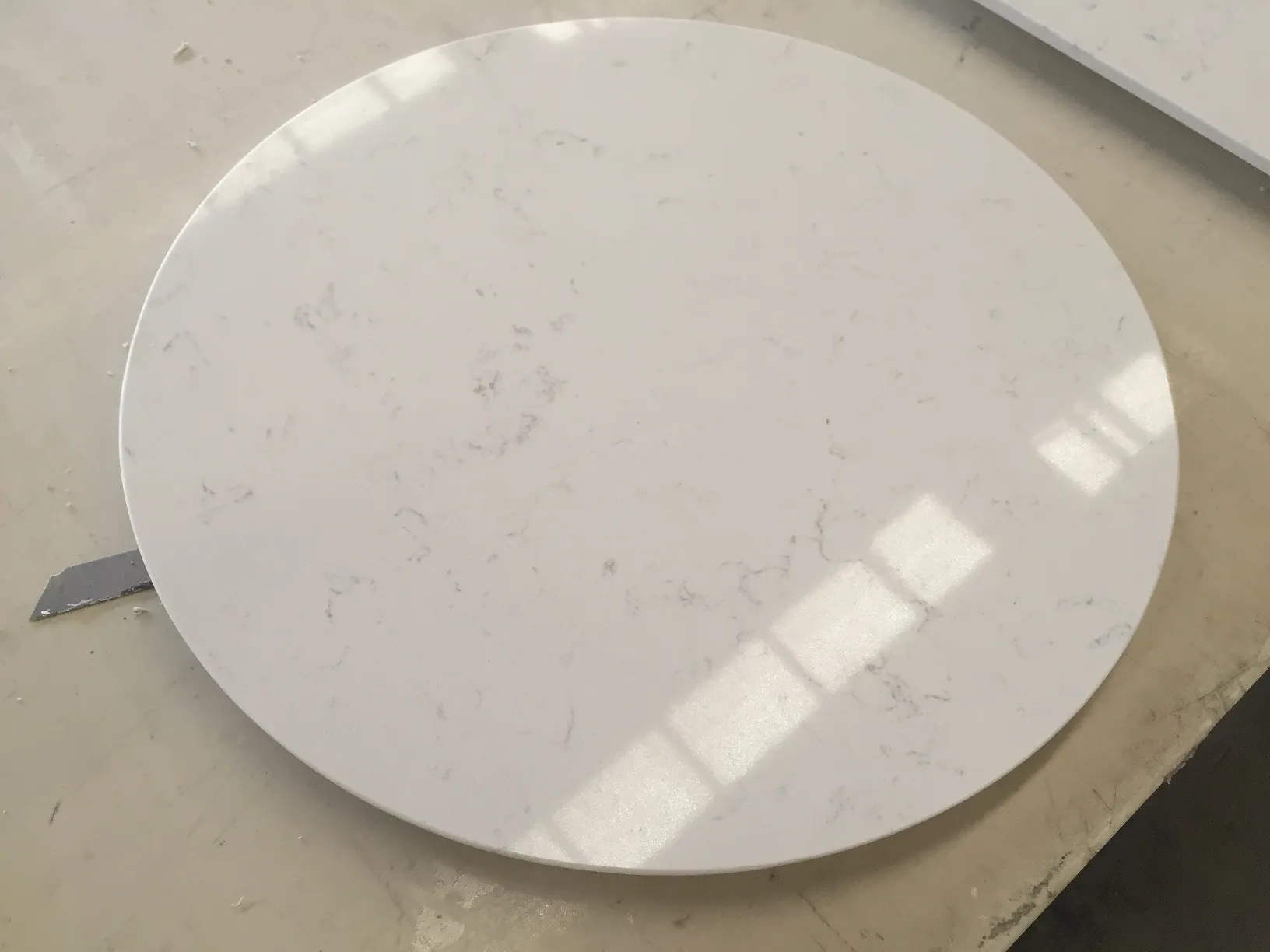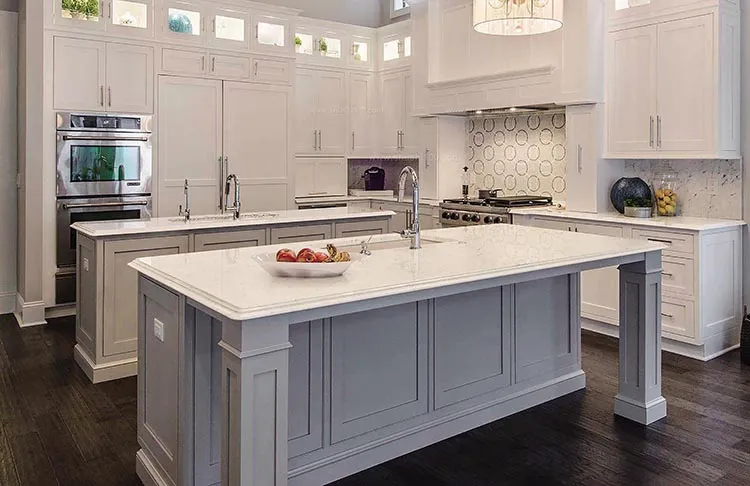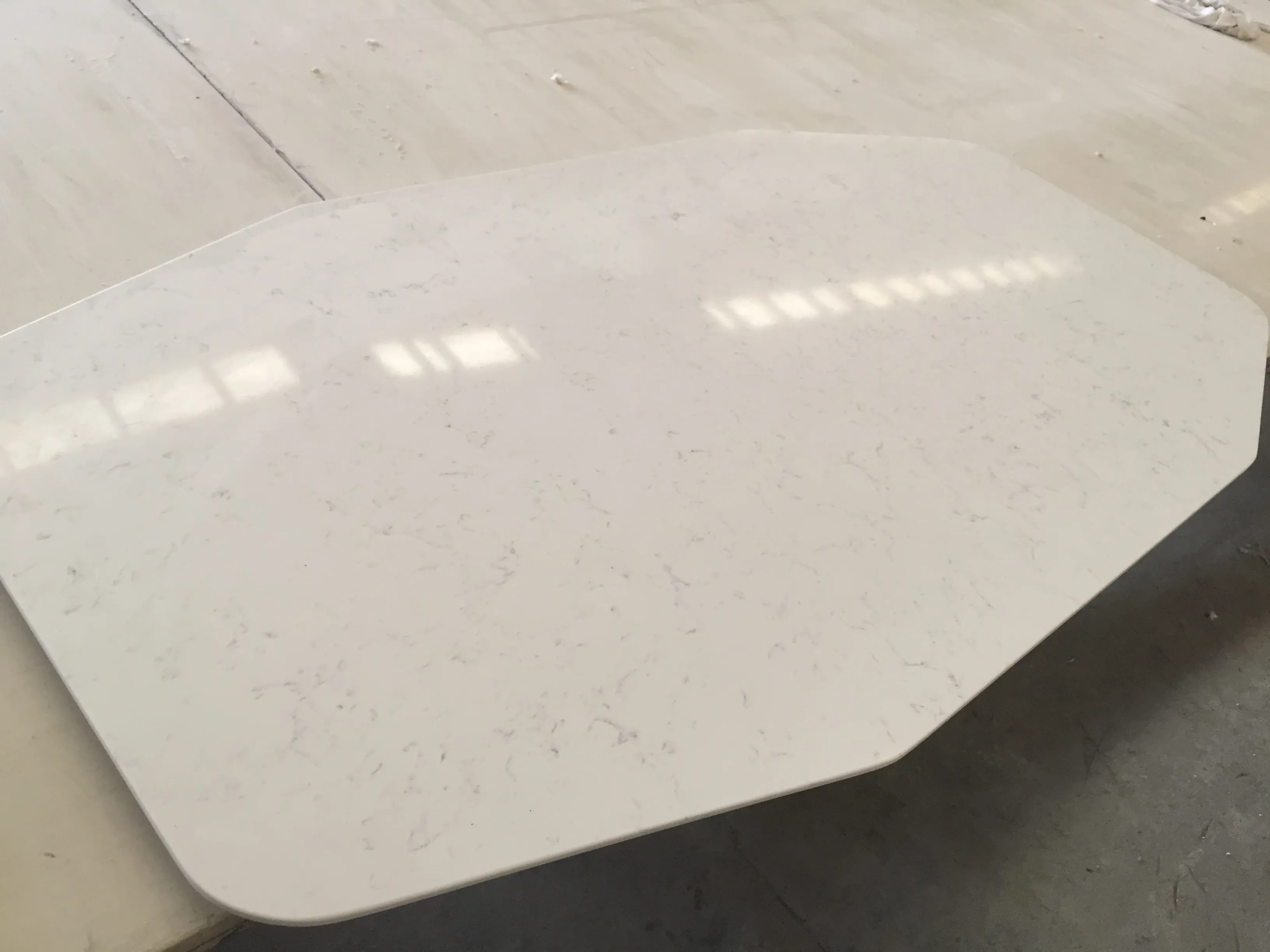In modern home design, the choice of countertop materials for kitchens and bathrooms is undoubtedly a crucial part. In recent years, quartz countertops have quickly become one of the preferred materials for consumers due to their excellent durability, aesthetics and low maintenance characteristics. However, the popularity of quartz countertops is not a matter of one day or one night, and its development history is worth exploring. So, in which year did quartz countertops become popular? What factors have driven its widespread application?
This article will analyze the popularity of quartz worktops in detail from multiple angles, including the origin, technological progress, and market acceptance of quartz countertops.

1. The origin and early development of quartz countertops
The basic properties of quartz materials
To understand when quartz countertops became popular, you first need to understand the material itself. Quartz is a silica mineral that is widely distributed in the earth's crust. Quartz has been widely used in the industrial field for a long time because of its high hardness, scratch resistance, and corrosion resistance. However, the transformation of quartz materials into countertop materials in the fields of construction and decoration is a relatively modern innovation.
The birth and development of engineered stone
In the 1970s, Italian engineer Breton S.p.A. developed the technology of "engineered stone". The core of this technology is to mix crushed quartz with resin adhesive under high pressure and high temperature, and then add pigments to press it into a solid plate. This engineered stone technology is the pioneer of quartz countertops and laid the foundation for modern quartz countertops.
This technology gives quartz countertops many advantages that natural stone cannot match: it not only retains the hardness of quartz, but also makes the countertops have higher toughness through mixed resin, reducing the risk of cracks and fragmentation. At the same time, quartz worktops are no longer limited to the color and texture of natural stone, but can be produced in various colors and patterns through artificial blending to meet the needs of different consumers.
2. The gradual popularization of quartz countertops: a key stage in the 1990s
1990s: The rise of quartz countertops in the European and American markets
Although the foundation of engineered stone technology was developed in the 1970s, it was not until the 1990s that quartz counter tops really entered large-scale production and began to emerge in the home improvement market. Initially, this material was mainly popular in the European market, especially in countries such as Italy and Spain, which have high requirements for home design. Quartz countertops gradually replaced some marble and granite and became a popular choice in high-end kitchen and bathroom design.
During this period, with the continuous improvement of technology, the production cost of quartz countertops has been reduced, making this material not only limited to the high-end market, but also began to penetrate into a wider consumer group. Consumers in the European and American markets gradually realized that quartz countertops not only have the beauty and texture of natural stone, but also have better durability and convenient maintenance, which promoted the initial popularization of quartz countertops.
Acceptance and promotion in the North American market
In the late 1990s, quartz counter tops began to enter the North American market. The American home decoration industry has a relatively fast acceptance of new materials, especially in middle-class families who pursue fashion and practicality. Quartz worktops have gradually replaced traditional granite and marble and become a high-end and practical choice.
The popularity of quartz countertops is due to its many advantages: first, its appearance can imitate natural stones such as marble and granite, but it does not require as frequent maintenance and care as natural stones; second, quartz countertops have a non-porous structure, which makes them excellent in anti-fouling and antibacterial properties, especially suitable for places such as kitchens that have extremely high hygiene requirements.

3. The beginning of the 21st century: the full popularity of quartz countertops
2000s: Quartz countertops become the mainstream choice
Entering the 21st century, quartz countertops ushered in a real peak of popularity. According to industry statistics, in the early 2000s, the market share of quartz countertops increased significantly, becoming the first choice of countertop materials in many home decorations. During this period, quartz countertops were not only popular in developed countries such as Europe and the United States, but the Asian market, especially the Chinese market, also began to rapidly accept this material.
The reasons for the popularity of quartz countertops can be attributed to the following aspects:
● Diversified appearance options: With the further maturity of production technology, the colors, textures and design styles of quartz countertops are becoming more and more diverse. Whether it is the antique texture that imitates natural stone, or the solid and gradient colors with a modern feel, consumers can make personalized choices according to different decoration styles.
● Improved cost-effectiveness: Although quartz worktops were originally high-end materials, with the expansion of production scale and technological progress, the cost of quartz countertops has decreased, making it an economical choice for more and more families.
● Easy maintenance: Compared with marble and granite, quartz counter tops do not require regular sealing treatment, and daily cleaning only requires wiping with a damp cloth, saving a lot of maintenance costs and time.
Media publicity and market education
Another key factor driving the popularity of quartz worktops is media publicity and market education. A large number of home improvement TV programs, magazines and online platforms began to introduce the advantages of quartz worktops and show their application effects in kitchens of different styles. Through extensive media publicity, quartz countertops have gradually moved from the initial high-end choice to the vision of ordinary consumers and become a "star" product in the home improvement market.
In addition, many large home building materials brands have also begun to work hard on quartz countertops, launching various series of products and promoting them to consumers through exhibitions, home decoration exhibitions, etc. Consumers gradually realize that quartz countertops are not only a material choice, but also a solution that combines beauty, practicality and cost-effectiveness.
4. The technical and quality advantages behind the widespread application of quartz countertops
High hardness and durability
The reason why quartz countertops can quickly become popular in a short period of time is inseparable from their excellent physical properties. The hardness of quartz itself reaches 7 on the Mohs hardness scale, second only to extremely hard materials such as diamonds, which makes quartz countertops extremely scratch-resistant. In daily use, quartz counter tops can resist scratches from sharp objects such as knives and maintain a smooth surface.
Anti-fouling and antibacterial properties
Unlike natural stone, quartz countertops have a non-porous structure, which means that it does not absorb liquids and can effectively prevent the penetration of liquids such as water stains, oil stains and alcohol. In addition, the non-porous structure also makes quartz countertops have excellent antibacterial properties, reducing the risk of bacterial growth, especially suitable for spaces such as kitchens that have high hygiene requirements.
Heat resistance and chemical corrosion resistance
Quartz countertops also perform very well at high temperatures, can withstand general cooking heat sources, and are not easily deformed or damaged. At the same time, quartz counter tops are also highly resistant to most chemical cleaners, and can withstand the use of various cleaners in the kitchen, maintaining their original luster and texture.

5. Changes in consumer preferences and the final establishment of the popularity of quartz countertops
The limitations of natural stone are revealed
Traditional natural stones such as marble and granite, although very beautiful in appearance, require regular maintenance and are prone to cracking, dirt absorption and other problems. As consumers' demand for low-maintenance, high-performance materials gradually increases, quartz worktops have gradually replaced these natural stones with their excellent physical properties and aesthetic performance, becoming the first choice for the new generation of countertop materials.
Improved environmental awareness
In recent years, environmental issues have received more and more attention from consumers. Compared with natural stone, quartz counter tops consume relatively fewer resources in the production process, and their artificial production process can better control environmental pollution. Many consumers have taken environmental protection into consideration when choosing countertop materials, and quartz worktops just meet this demand.

